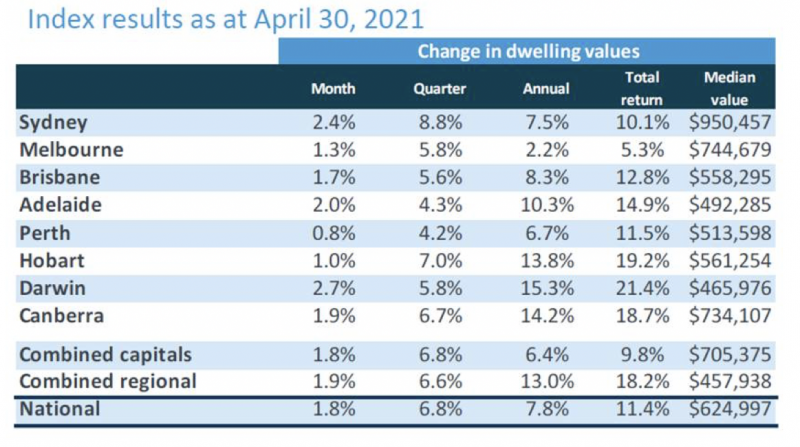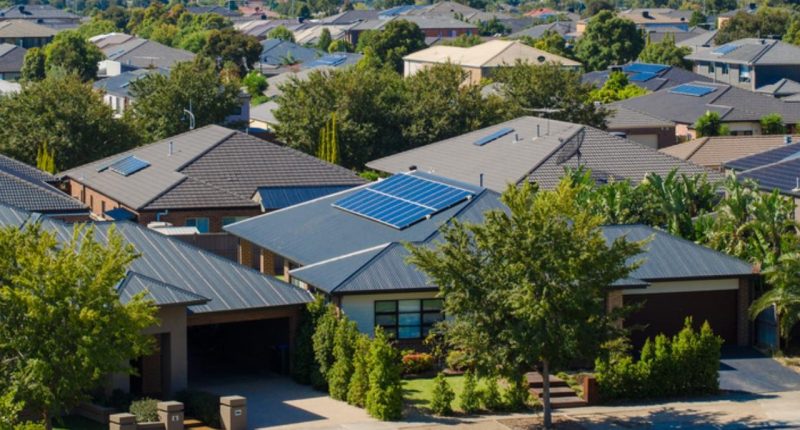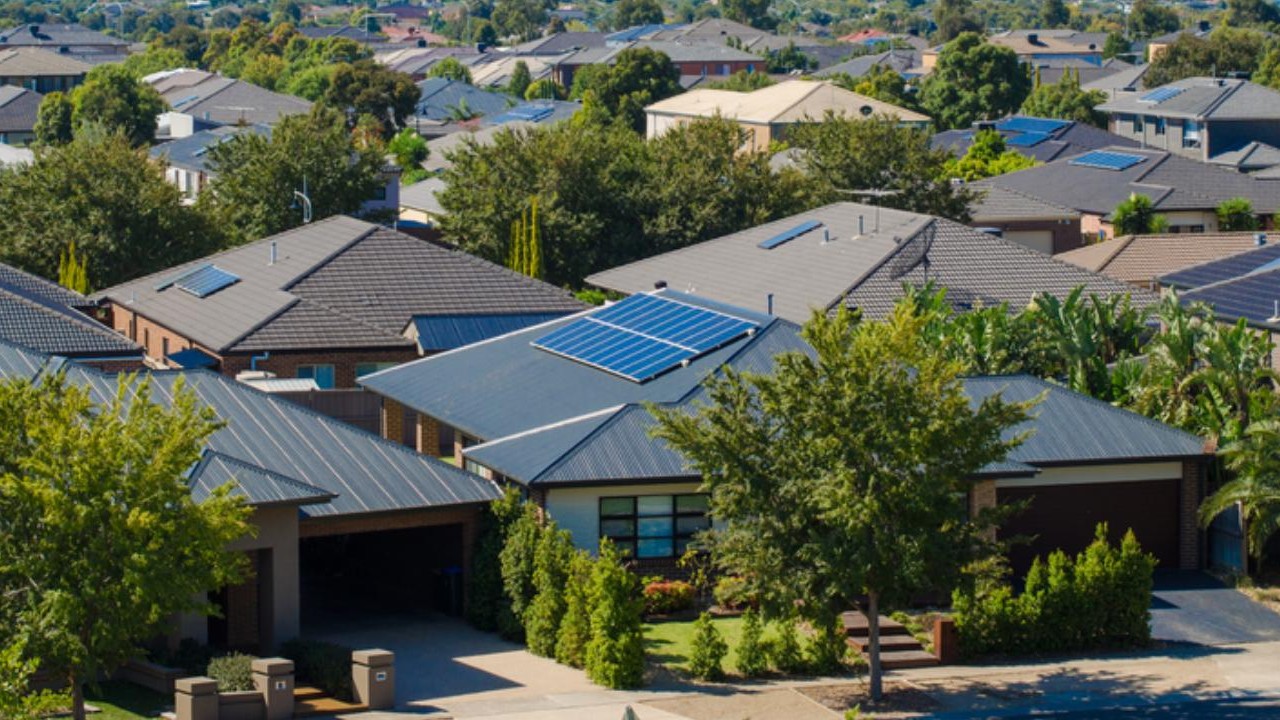- Property values have continued to climb at a lively pace, but growth has slowed as signs continue to point towards the market moving through a peak rate of growth
- Australian house prices increased by 1.8 per cent in April, with the monthly rate of capital gains slowing from a 32-year peak in March of 2.8 per cent
- CoreLogic research director Tim Lawless says the pace of capital gains could slow further over the coming months as inventory levels rise and affordability constraints dampen housing demand
- Since property prices are rising higher than rentals, yields have been declining in most parts of Australia, according to CoreLogic
- The upper quartile of the housing sector continues to lead the recovery process after seeing a greater fall during previous downturns
Property values have continued to climb at a lively pace, but growth has slowed as signs continue to point towards the market moving through a peak rate of growth.
Australian house prices increased by 1.8 per cent in April, with the monthly rate of capital gains slowing from a 32-year peak in March of 2.8 per cent.
According to CoreLogic’s national home value index for April, while growth has slowed, values are still rising at a rapid pace, up 6.8 per cent over the past three months to be 10.2 per cent higher than the COVID low in September last year.
CoreLogic research director Tim Lawless says the pace of capital gains could slow further over the coming months as inventory levels rise and affordability constraints dampen housing demand.
“The slowdown in housing value appreciation is unsurprising given the rapid rate of growth seen over the past six months, especially in the context of subdued wages growth,” he said.
“With housing prices rising faster than incomes, it’s likely price sensitive sectors of the market, such as first home buyers and lower income households, are finding it harder to save for a deposit and transactional costs,” he added.
Despite the downturn, favourable housing market conditions continue to exist throughout the country, with every capital city and ‘rest-of-state’ area recording an increase in dwelling prices over the month.
Darwin and Sydney had the highest month-on-month increases in dwelling prices at 2.7 per cent and 2.4 per cent, respectively, while Perth had the lowest rate of growth at 0.8 per cent among the capital cities.
The four smallest capital cities all experienced double-digit annual growth —with Adelaide at 10.3 per cent, Hobart at 13.8 per cent, Darwin at 15.3 per cent, and Canberra at 14.2 per cent — while Melbourne experienced the slowest growth at 2.2 per cent.
Since property prices are rising higher than rentals, yields have been declining in most parts of Australia, according to CoreLogic.
The gross rental yield has dropped from 3.72 per cent a year ago to a current low of 3.50 per cent.
The general trend of houses outperforming units persisted in April, according to CoreLogic, as higher-density housing models saw less demand amidst increased supply in some inner-city precincts.
For the first four months of the year, house prices, currently at 8.6 per cent, have increased at double the rate of unit values at just 4.3 per cent in the combined capital cities.
“A preference shift away from higher density housing during a global pandemic is understandable, however a rise in flexible working arrangements also seems to be supporting greater demand for houses around the outer-fringes of capital cities,” Lawless said.
“Relatively weak investor activity, compounded by a supply overhang in some high-rise precincts, is also dampening price growth in unit markets,” he added.

The upper quartile of the housing sector continues to lead the recovery process after seeing a greater fall during previous downturns.
According to CoreLogic, the upper quartile of capital city housing markets has seen an 8.8 per cent increase in dwelling prices over the last three months, compared to a 4.1 per cent increase in the lower quartile.
Outside of Sydney and Melbourne, the toughest renting conditions exist, with Darwin and Perth seeing the most dramatic increases in rentals, while Melbourne and Sydney rents are increasing at the slowest pace.
The poorer housing conditions in Melbourne and Sydney, according to Lawless, can be due to a greater vulnerability to tenancy market shocks from stalled overseas migration.
Rental conditions are less favourable in higher-density markets, especially in Melbourne and Sydney.
The downward trend in unit rents has been more pronounced in Melbourne, where rents have fallen by 7.6 per cent in the last year, however, CoreLogic noted rents are now stabilising in the area.







